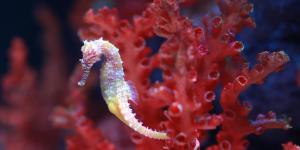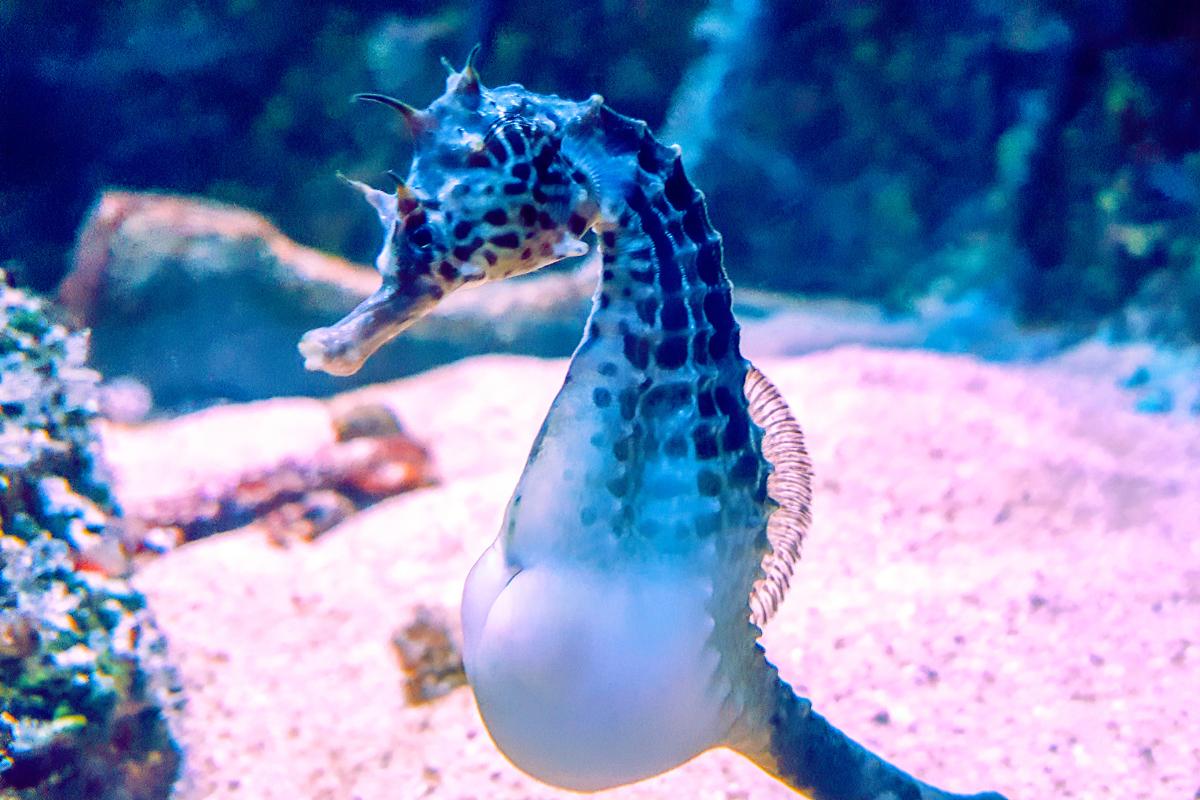How Seahorses Give Birth


Did you know that male seahorses are the ones that give birth? It’s a fact that might surprise many, as it’s quite unusual in the animal kingdom. While most species have females giving birth, seahorses have flipped the script. This unique reproductive process is just one of the many fascinating aspects of these small, horse-shaped fish.
In this AnimalWised article, we will explain how seahorses give birth and share other fascinating facts about their reproduction.
What are seahorses?
Seahorses are small, bony fish with a distinctive horse-like head and a long, slender body. Seahorses belong to the family Hippocampidae within the order Syngnathiformes. There are currently over 50 recognized species of seahorses. Seahorses are found in various marine habitats around the world, including tropical and temperate waters.
One of their most striking features is their prehensile tail, which they use to grasp onto seagrass, coral, or other structures, providing them with a secure anchor. This adaptation is particularly important for their reproductive success, as it helps them stay in place during the birthing process.
Camouflage plays a crucial role in the survival of seahorses. Their ability to blend in with their surroundings helps them avoid predators and find suitable mates. Seahorses are not very fast swimmers, and they often rely on their camouflage to avoid predators. Seahorses often inhabit shallow, sheltered waters with abundant seagrass or coral reefs, which provide them with both food and protection.
Seahorses are carnivores, and they feed on small crustaceans, plankton, and other small marine organisms. They use their long snouts to suck up their prey, similar to a vacuum cleaner.
However, one of the most fascinating aspects of seahorses is their reproductive process. Unlike most other fish, where the female gives birth, male seahorses are the ones that carry and give birth to the young. They have a specialized pouch on their abdomen where the eggs develop.
Impressed by seahorses? Take a look at other animals with jaw-dropping color-changing abilities in our other article.
How do seahorses reproduce?
Seahorses are known for their elaborate courtship rituals, which are essential for bonding and reproduction. These rituals can last for several days and involve a series of synchronized movements and color changes.
The courtship dance begins with the male and female swimming in circles around each other. They may engage in intricate movements, such as nodding their heads, swaying their bodies, and changing their coloration. These displays serve to attract the attention of potential mates and demonstrate their fitness for reproduction.
As the courtship progresses, the male and female will often lock tails together, forming a "heart" shape. This gesture is a sign of mutual attraction and commitment. The male may also release pheromones, chemical signals that help to attract the female and stimulate her reproductive behavior.
Seahorses exhibit sexual dimorphism, meaning there are noticeable differences between males and females. While both sexes have a similar body shape, males possess a specialized organ known as a brood pouch. This pouch is located on their abdomen and serves as a nursery for developing eggs. After mating, the female transfers her eggs into the male's brood pouch, where they are fertilized and incubated.
The culmination of the courtship ritual is the transfer of eggs from the female to the male's brood pouch. The female carefully inserts her ovipositor, a tube-like organ, into the male's pouch and releases her eggs. The male then fertilizes the eggs internally, ensuring that all of the offspring are his.
Seahorse courtship is often characterized by its monogamous nature. Many species form strong pair bonds and remain together for extended periods. This monogamy can enhance their reproductive success by ensuring that both partners are committed to raising their offspring.
Curious about how other animals reproduce? Dive into our article on the fascinating variety of reproductive modes in the animal kingdom.

Why does the male seahorse give birth?
Seahorses have evolved a unique reproductive strategy where the male, rather than the female, gives birth. This adaptation, shared by other members of the Syngnathiformes order like pipefish and sea dragons, allows both parents to maximize their reproductive efforts. While the male incubates the eggs in his brood pouch, the female can produce more, resulting in a faster reproductive cycle.
This division of labor benefits both parents. The male provides a safe and nurturing environment for the developing embryos, while the female can focus on producing more eggs. This adaptation likely evolved to suit the seahorse's lifestyle. As slow-moving creatures reliant on camouflage, having the male carry the eggs provides added protection for the offspring, allowing both parents to contribute effectively to the species' survival.
When a male seahorse gets pregnant, doesn't that make him a female?
No, when a male seahorse gets pregnant, it does not make him a female. This role reversal in pregnancy is unique, but it doesn't change the male's biological sex.
Seahorses have a unique reproductive process, but wait until you read about the strangest courtship rituals in the animal world.

How long is the gestation period for seahorses?
Once the female seahorse transfers her eggs into the male's brood pouch, the process of fertilization begins. The male's pouch is a specialized organ that provides a nurturing environment for the developing embryos. It functions much like a womb, regulating factors such as salinity, temperature, and oxygen levels.
As the eggs develop, they are nourished by the male seahorse. He provides nutrients and oxygen to the embryos through a placenta-like structure within the brood pouch. This ensures that the offspring receive the necessary sustenance for their growth and development.
The gestation period for seahorses typically lasts between 10 and 25 days. However, the exact duration can vary depending on the species and environmental conditions. During this time, the male seahorse carefully protects and cares for the developing embryos within his pouch.

How does the male seahorse give birth?
As the gestation period nears its end, the male seahorse begins to experience contractions. These contractions are similar to those experienced by human mothers during labor, and they can be quite intense. Scientists have observed that male seahorses may experience a significant amount of stress during the birthing process. The contractions can be physically demanding, and the male may exhibit signs of exhaustion or discomfort. However, the instinctual drive to ensure the survival of his offspring is strong, and he perseveres through the ordeal.
The contractions push the developing embryos towards the opening of the brood pouch. Eventually, the fry, or baby seahorses, are ejected from the pouch. This process can take several hours, and the male may give birth to anywhere from 100 to over 1,000 offspring.
Despite the remarkable adaptations that have allowed seahorses to thrive in marine environments, newborn seahorses face significant challenges to survival. The mortality rates for fry are extremely high, with only a tiny fraction of the hundreds or thousands of offspring surviving into adulthood.
Once born, the fry are on their own. The male seahorse does not provide any parental care after birth, leaving the young to fend for themselves. Predation, lack of food, and habitat loss are among the environmental factors that can significantly impact the survival of newborn seahorses.
Want to dive deeper into the world of seahorses? Check out our article filled with fun and lesser-known facts about these extraordinary sea dwellers.
If you want to read similar articles to How Seahorses Give Birth, we recommend you visit our Facts about the animal kingdom category.
- Ahnesjö, I. and JF Craig. (2011). The biology of Syngnathidae: pipefishes, seadragons and seahorses . Journal of Fish Biology 78:1597-1602.
- Proyect Seahorse. Advancing marine conservation . At proyectseahorse.com
- Rosenqvist, G. and A. Berglund. (2011). Sexual signals and mating patterns in Syngnathidae . Journal of Fish Biology 78:1647-1661.








